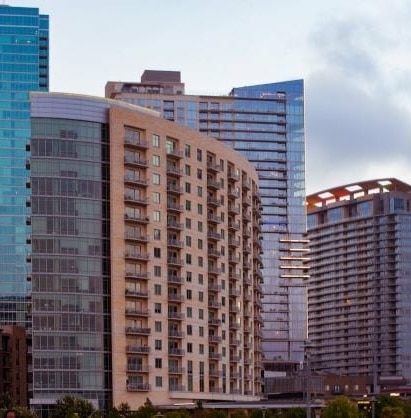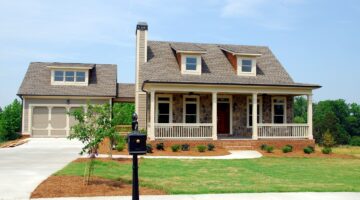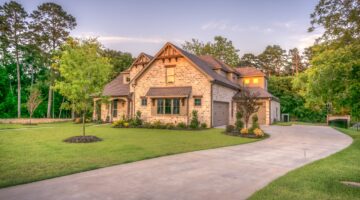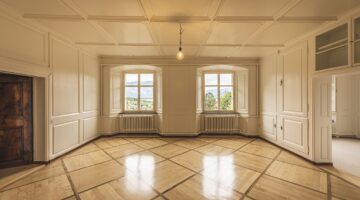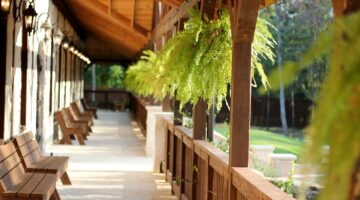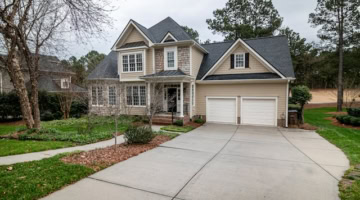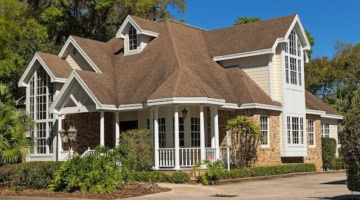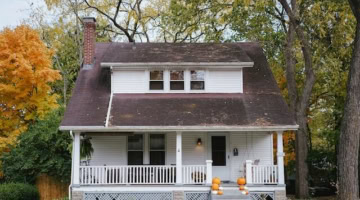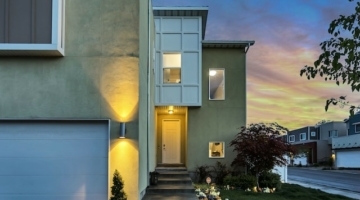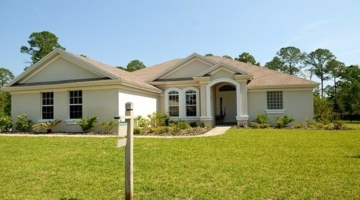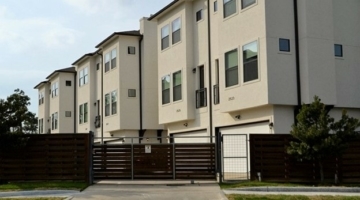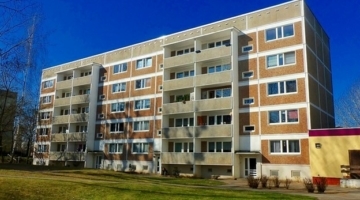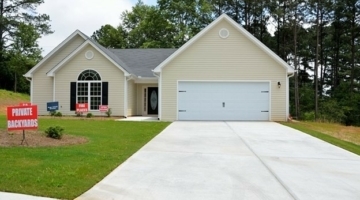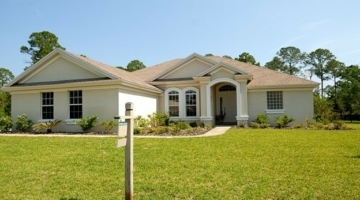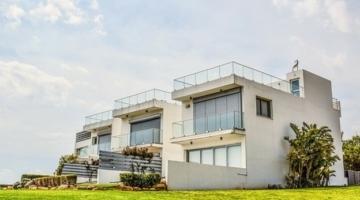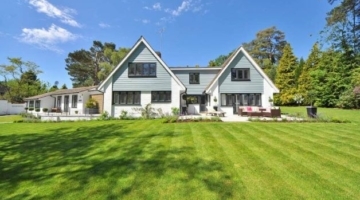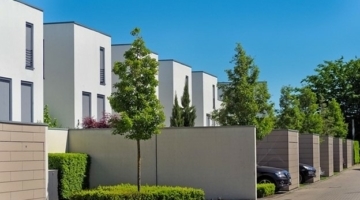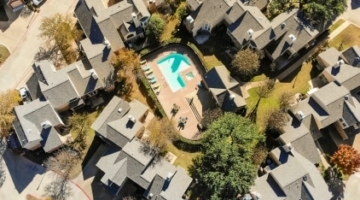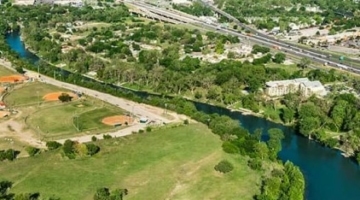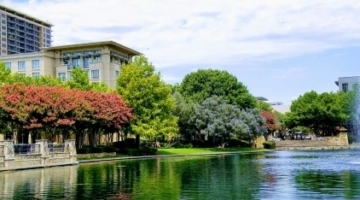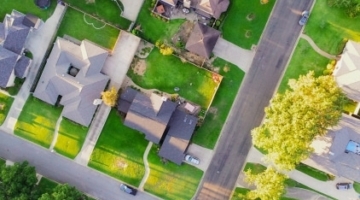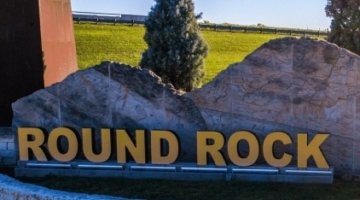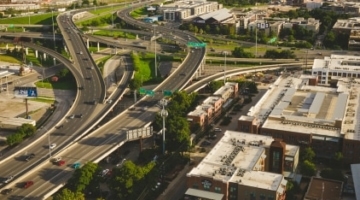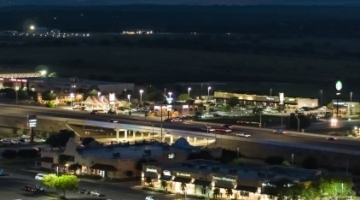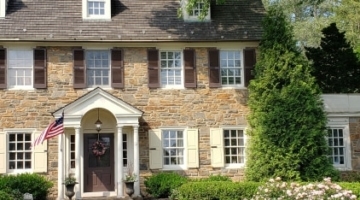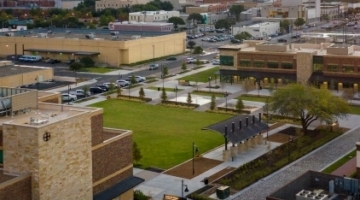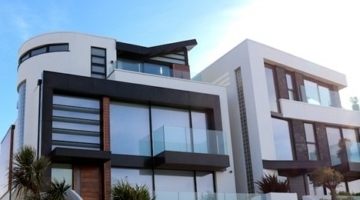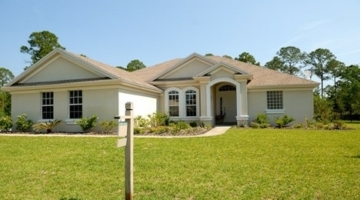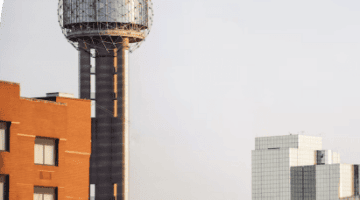Real Estate Investing Performance In Austin
If you are interested in learning about the available financing options, please let us know during the first call so we can advise accordingly. In most cases, we work with local partners to help investors get the financing they need to complete the acquisition process.
The table below helps summarize what you need to know about Austin investments.
| Avg Purchase Price | Avg Cap Rate | Avg Cash on Cash Return | Avg Cash Needed to close | |
|---|---|---|---|---|
| Commercial 5+ units LTR | 150k - 200k per door | 0% - 4% | 0%-4% (assumes 25% down payment) | $60,000 per door |
| Short Term Rental (SFH) | 450k - 550k | 4% - 6% | 4% - 7% | $110,000 (furnished) |
| STR (2-4 Units) | 175k - 250k per door | 5% - 7% | 5% - 8% | $51,500 per door (furnished) |
| Long Term Rental (2-4 Units) | 200k - 250k per door | 0% - 4% | 0% - 4% | $60,000 per door |
| Long Term Rental (SFH) | 375k - 425k | 0% - 4% | 0% - 2% | $90,000 |
| Househack (2-4 Units) | 200k - 250k per door | n/a | n/a | $13,000 per door |
| Househack (SFH) | 400k - 550k | n/a | n/a | $21,000 |
Subscribe to daily deals
Investment Tips for Austin Real Estate
Before we go any further, you must first get rid of the notion that you’ll only record good tenant traffic by investing in the Austin downtown area. Why do we ask this of you?
The truth is that many of the people we encounter in and around Austin travel into the city daily for work or school. Many of these come from areas such as Georgetown, Hutto, Buda, Leander, Kyle, Bastrop, San Marcos, and Lockhart.
What we are trying to say here is that there are people who live as far off as Killeen and north and south Braunfels who have rented there because of the close proximity to Austin! This is by itself proof enough that you shouldn’t discount or overlook the secondary markets.
Settling Foundation(s) and the Rarity of Multi-Family Properties
Another factor to note is that multifamily units are sometimes tricky to locate and cash flow positively. Here, we recommend broadening up your search phrases to include single-family home + ADU style deals.
As you do this, begin getting comfortable with the idea of coming across unlevel foundations, more so for properties located on the eastern side of I35. We say this because almost all the properties we have looked at here have had signs of foundation settling.
It goes to show that this is common in this area and that it’s a problem that’s easily fixable.
For investors whose goals are geared towards cash flow, we will need to have a detailed discussion revolving around the issue of esoteric management strategies. It’s an issue that has been brought about by the low-to-rent price ratios existing in Austin.
These ratios have made it hard to find traditional single-family or multifamily properties capable of cash flowing positively using the standard long-term lease strategies. It, therefore, calls for all involved to explore other strategies to help meet the cashflow goals.
Main Activities/ Attractions in the Austin Area
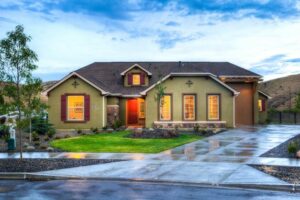
Austin boasts a thriving and robust economy bolstered by different sectors such as tourism, finance, technology, education, medical, manufacturing, and distribution. Looking at all these, it’s clear that Austin has many things to do and see.
For years, the first thing that has popped into mind when people hear of Austin is its live music and vibrant nightlife. The only thing that has changed today is that the city has gained national recognition for the same, with many remarking about its dense talent pool.
A talent pool that has grown to include executives, as seen by the number of companies setting up regional and corporate headquarters in the city. As an example, some of the companies that now operate offices in Austin include the following:
- Samsung
- Apple
- Whole Foods
- Charles Schwab
- Vrbo
- Dell
- Visa
- eBay
- Oracle
- General Motors
- Indeed
- IBM
- Home Depot
All these corporate employees need a place to call home when away from their busy jobs.
Success stories investing in this area

“Used Victor in finding and purchasing my first investment property. Victor and his team were knowledgeable in providing help along the way especially toward the end while getting everything squared away.”
Logan Hicks
Long Term Rental

Victor was an awesome realtor! We were first time investors in Texas and he was very responsive, experienced, and pleasant. Every question we had he answered promptly and from start to finish Victor guided us thorough the whole process and made the buying transaction as smooth as possible for us! You will not be disappointed by working with Victor Steffen, thank you Victor!
Janeth Quintero
Long Term Rental
Investment Strategies for Austin
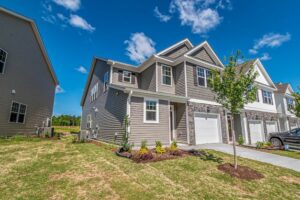
There is a variety of real estate investment strategies that work well for the city, e.g.,
- The Rent by The Room Model. We love this particular strategy as it involves buying a large 5+ bedroom home and leasing out individual rooms. Here, you get to cash flow positive while enjoying the many benefits linked to aggressive appreciation.
- Short-Term Rental Investing. It’s another strategy we have seen pay off handsomely for Austin investors. You’ll, however, need to keep up with the ever-changing regulations, many of which have to do with association and municipality regulations.
- Mid-Term Rentals, especially those on the southern side of Austin. Many of these rentals are located close to St David’s and are perfect for traveling nurses. Another option would be buying mid term corporate rentals on the northern side, close to the large tech campuses.
- New Construction Homes, especially those in the far northeastern area of Austin, are also proving to be a ‘hot’ investment. The area has recently proven exciting thanks to the expected construction of the $17 billion Samsung development. It’s an area that will soon be filled by high-paid workers from Taylor, East Pflugerville, and Hutto markets.
Is Austin a Good Real Estate Investment?
Austin, Texas, is considered a strong market for real estate investors due to several factors, including:
Strong Economy: Austin has a thriving and diverse economy, with a significant presence in technology, healthcare, education, and tourism. This strong economy has helped to create jobs and drive population growth, which in turn has helped to support demand for housing. The Austin economy has experienced significant growth over the last decade. Austin is known as one of the fastest growing cities in the United States, and its economy reflects that growth. The city has a diverse economy, with a strong technology sector, a growing healthcare industry, and a thriving tourism industry.
In recent years, Austin has become a hub for technology companies, with major players like Apple, Amazon, Facebook, and Google establishing a presence in the city. This has led to job growth and an influx of highly educated workers, driving demand for housing and contributing to the city’s economic growth.
The healthcare industry is also a major contributor to Austin’s economy, with several top-ranked hospitals and medical facilities located in the city. In addition, Austin’s tourism industry continues to thrive, with millions of visitors coming to the city every year to experience its music, culture, and outdoor recreation.
Growing Population: Austin has experienced significant population growth in recent years, and is projected to continue to grow in the future. This growing population has created a strong demand for housing, and has helped to support the local real estate market. According to data from the US Census Bureau, the population of Austin increased by over 25% between 2010 and 2020, reaching a population of over 970,000 people in 2020.
High Quality of Life: Austin is known for its high quality of life, with a vibrant cultural scene, outdoor recreation opportunities, and a thriving music and food scene. This has helped to make Austin a desirable place to live, and has helped to support demand for housing in the area.
Some of the popular things to do in Austin include:
Visit South Congress (SoCo) for shopping, dining, and live music
Explore the many food trucks and street vendors around the city
Attend the famous Austin City Limits (ACL) Music Festival
Visit the Texas State Capitol and the Texas Governor’s Mansion
Hike or bike on the many scenic trails and parks around Austin
Visit the world-renowned University of Texas at Austin campus
Check out the 6th Street Entertainment District for a nightlife scene
Enjoy the beautiful Lady Bird Lake and kayak or paddleboard on it
Visit the Bullock Texas State History Museum to learn about the state’s history and culture
Take a tour of the famous Austin murals and street art around the city.
Affordability: Despite its high quality of life and strong economy, Austin still offers relatively affordable housing options compared to other major cities in the United States, making it an attractive option for first-time homebuyers, families, and real estate investors. According to Zillow, the median home value in Austin was around $355,000 in February 2023, which is up from around $255,000 in February 2013. This represents an increase of over 38% in a 10-year period.
Proximity to Major Cities: Austin is located in central Texas and is within a few hours’ drive of major cities like Houston and Dallas. This proximity to these major cities, combined with its strong local economy and high quality of life, makes Austin an attractive place to live, work, and invest. The cities that make up the Austin metro include the following:
Round Rock: Round Rock is a fast-growing city located just north of Austin. It is known for its high-quality schools, low crime rate, and affordable cost of living.
Pflugerville: Pflugerville is located just north of Austin and is known for its family-friendly atmosphere, great schools, and affordable housing options.
Cedar Park: Cedar Park is located northwest of Austin and is known for its proximity to Lake Travis, its beautiful parks and trails, and its high-performing schools.
Leander: Leander is located northwest of Austin and is known for its growing population, its beautiful parks and trails, and its proximity to Lake Travis.
Georgetown: Georgetown is located just north of Austin and is known for its historic downtown, its charming homes, and its low cost of living compared to other cities in the area.
San Marcos: San Marcos is located south of Austin and is known for its proximity to the Texas State University, its beautiful parks and rivers, and its vibrant arts and culture scene.
Is it a Good Time to Invest in Austin?
Austin is STILL a prime market and now is a great time to jump into Austin real estate, here is why:
Austin, Texas has seen many recent developments and attractions that are impacting the real estate market. Some of the most notable include:
The development of new master-planned communities, such as the Domain and Lakeline, which offer a mix of residential, commercial, and recreational facilities.
The expansion of the city’s downtown area, with new high-rise residential and commercial buildings being constructed, providing more housing options and job opportunities in the city center.
The growth of the city’s music and arts scene, with new music venues and art galleries being opened, making Austin a cultural hub for the region.
The opening of new shopping centers, such as the Domain, which provide residents with more shopping and dining options.
The growth of the city’s technology sector, with major tech companies such as Apple, Amazon, and Google establishing offices in Austin. This has driven demand for housing in the city and has helped to attract new residents. Austin is well known for being a hub for technology companies, and has earned the nickname “Silicon Hills”. Over the past several decades, many tech companies have established a presence in Austin, drawn by the city’s highly educated workforce, low cost of living, and vibrant culture.
Some of the largest tech companies in Austin include:
Dell Technologies – founded in 1984 and headquartered in Round Rock, a suburb of Austin, Dell is a leading provider of technology products and services. The company employs thousands of people in the Austin area.
Apple – Apple has had a presence in Austin since the 1990s, and has been expanding its operations in the city in recent years. The company has a significant campus in Austin, where it employs a large number of workers.
IBM – IBM has had a presence in Austin for many years, and has a significant campus in the city. The company is a leader in providing technology solutions and services, and employs thousands of people in Austin.
Amazon – Amazon has a growing presence in Austin, with a large fulfillment center in the city and plans for further expansion in the future. The company is a leader in e-commerce and cloud computing, and is one of the largest employers in Austin.
Best Neighbourhoods to Invest in Austin
Some of the most popular and sought-after neighborhoods in Austin include:
Downtown Austin
Downtown Austin is a vibrant, walkable neighborhood offering a wide range of homes, shops, restaurants, and attractions.
Tarrytown
Tarrytown is an upscale neighborhood located near Lake Austin, offering spacious homes, scenic views, and a convenient location near amenities and attractions.
South Austin
South Austin is a diverse and eclectic neighborhood known for its music scene, food, and independent shops.
West Lake Hills
West Lake Hills is an affluent neighborhood located near the hills overlooking Lake Austin, offering spacious homes, scenic views, and a convenient location near amenities and attractions.
Barton Hills
Barton Hills is a neighborhood located near Barton Springs Pool, offering a range of homes, parks, and a convenient location near amenities and attractions.
The up-and-coming areas of Austin, Texas can vary based on a number of factors, including location, proximity to amenities, and local development projects. Some of the neighborhoods in Austin that are considered to be up-and-coming include:
East Austin
East Austin is a diverse neighborhood known for its vibrant food and music scenes, as well as its growing number of new construction homes, shops, and restaurants.
North Loop
North Loop is a neighborhood located near downtown Austin, offering a growing number of shops, restaurants, and parks, as well as a range of homes and a convenient location near amenities and attractions.
South Congress
South Congress is a neighborhood located near downtown Austin, offering a growing number of shops, restaurants, and parks, as well as a range of homes and a convenient location near amenities and attractions.
The Domain
The Domain is a mixed-use development located near downtown Austin, offering a growing number of shops, restaurants, and parks, as well as a range of homes and a convenient location near amenities and attractions.
Mueller: Mueller is a mixed-use development located near downtown Austin, offering a growing number of shops, restaurants, and parks, as well as a range of homes and a convenient location near amenities and attractions.
Financing Information for Austin Real Estate Investors
If you’re looking for financing, you’ll be glad to learn that JJVM can finance owner-occupied loans for single-family or house hackers’ investments. Such a loan will attract a 20% down payment.
